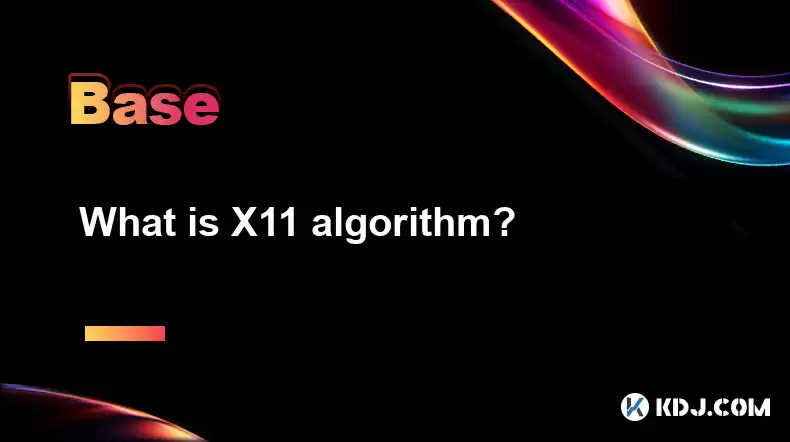-
 Bitcoin
Bitcoin $113400
-0.78% -
 Ethereum
Ethereum $3572
-2.11% -
 XRP
XRP $2.908
-4.07% -
 Tether USDt
Tether USDt $0.9999
0.00% -
 BNB
BNB $751.0
-1.27% -
 Solana
Solana $162.3
-3.12% -
 USDC
USDC $0.9998
-0.01% -
 TRON
TRON $0.3319
-0.54% -
 Dogecoin
Dogecoin $0.1963
-4.68% -
 Cardano
Cardano $0.7128
-4.47% -
 Hyperliquid
Hyperliquid $37.14
-2.57% -
 Stellar
Stellar $0.3858
-4.90% -
 Sui
Sui $3.341
-3.86% -
 Bitcoin Cash
Bitcoin Cash $554.6
-1.94% -
 Chainlink
Chainlink $16.10
-3.77% -
 Hedera
Hedera $0.2338
-4.24% -
 Ethena USDe
Ethena USDe $1.001
0.00% -
 Avalanche
Avalanche $21.66
-4.72% -
 Litecoin
Litecoin $117.8
-2.92% -
 UNUS SED LEO
UNUS SED LEO $9.002
0.08% -
 Toncoin
Toncoin $3.156
-6.13% -
 Shiba Inu
Shiba Inu $0.00001192
-3.09% -
 Uniswap
Uniswap $9.411
-3.25% -
 Polkadot
Polkadot $3.562
-2.50% -
 Dai
Dai $0.9999
0.00% -
 Monero
Monero $288.9
-4.05% -
 Bitget Token
Bitget Token $4.274
-1.88% -
 Cronos
Cronos $0.1362
-1.79% -
 Pepe
Pepe $0.0...09999
-4.55% -
 Aave
Aave $252.7
-2.97%
What is X11 algorithm?
X11, developed by Evan Duffield for Dash, uses 11 hash functions for energy-efficient, ASIC-resistant mining, enhancing security and decentralization in cryptocurrencies like Cannacoin.
Apr 10, 2025 at 07:28 am

The X11 algorithm is a cryptographic hash function used in various cryptocurrencies to secure their networks and facilitate mining. Developed by Evan Duffield, the creator of Dash, X11 is designed to be more energy-efficient and secure than other algorithms like SHA-256. It achieves this by using a chain of 11 different hashing algorithms, hence the name X11. This multi-algorithm approach not only enhances security but also makes it more resistant to ASIC (Application-Specific Integrated Circuit) miners, promoting a more decentralized mining environment.
How X11 Algorithm Works
The X11 algorithm operates by sequentially applying 11 different cryptographic hash functions to the input data. This sequence of hashing functions includes Blake, BMW, Groestl, JH, Keccak, Skein, Luffa, CubeHash, Shavite, SIMD, and Echo. Each of these functions is a well-established cryptographic hash function, and their combination in X11 creates a robust and secure hashing process. The output of one function becomes the input for the next, resulting in a final hash that is highly resistant to collisions and other forms of attack.
Advantages of X11 Algorithm
One of the primary advantages of the X11 algorithm is its energy efficiency. By using multiple hashing algorithms, X11 can be processed more efficiently on general-purpose hardware like CPUs and GPUs, compared to algorithms like SHA-256, which are more suited to ASICs. This efficiency helps to reduce the energy consumption associated with mining, making it more environmentally friendly. Additionally, the use of multiple algorithms makes X11 more resistant to ASIC dominance, which can lead to a more decentralized and democratic mining ecosystem.
Cryptocurrencies Using X11 Algorithm
Several cryptocurrencies use the X11 algorithm for their proof-of-work consensus mechanism. The most notable of these is Dash, which was the first cryptocurrency to implement X11. Other cryptocurrencies that use X11 include Cannacoin, InflationCoin, and MonaCoin. Each of these cryptocurrencies benefits from the security and efficiency that X11 provides, making it a popular choice among developers looking to create a robust and decentralized network.
Mining with X11 Algorithm
Mining with the X11 algorithm can be done using a variety of hardware, including CPUs, GPUs, and some ASICs specifically designed for X11. Here are the steps to start mining with X11:
- Choose Your Hardware: Decide whether you want to use a CPU, GPU, or an X11-specific ASIC. GPUs are generally the most popular choice due to their balance of performance and cost.
- Select a Mining Software: There are several mining software options available for X11, such as ccMiner, SGminer, and cpuminer. Choose one that is compatible with your hardware.
- Join a Mining Pool: Mining solo can be challenging due to the difficulty of the network. Joining a mining pool increases your chances of earning rewards. Popular X11 mining pools include Coinotron, Multipool, and zpool.
- Configure Your Software: Set up your mining software with the details of your chosen mining pool, including the pool's URL, your username, and any required passwords or worker names.
- Start Mining: Once everything is set up, start your mining software and begin mining. Monitor your performance and adjust your settings as needed to optimize your mining efficiency.
Security and Resistance to Attacks
The security of the X11 algorithm is enhanced by its use of multiple hashing functions. This multi-layered approach makes it more difficult for attackers to find collisions or reverse-engineer the hash, as they would need to break through all 11 algorithms. Additionally, the diversity of algorithms used in X11 makes it more resistant to certain types of attacks, such as those that target specific weaknesses in individual hash functions. This robustness contributes to the overall security of the cryptocurrencies that use X11.
Performance and Efficiency
The performance and efficiency of the X11 algorithm are notable aspects that contribute to its popularity. Because X11 is designed to be processed efficiently on general-purpose hardware, it allows for a wider range of users to participate in mining. This inclusivity helps to maintain a more decentralized network, as it is not dominated by a few large ASIC mining operations. The efficiency of X11 also means that miners can achieve a better hash rate per watt of power consumed, which is beneficial for both the miners and the environment.
Frequently Asked Questions
Q: Can I mine X11 cryptocurrencies with a regular computer?
A: Yes, you can mine X11 cryptocurrencies using a regular computer, particularly with a CPU or GPU. While the hash rate may not be as high as with specialized ASICs, it is still possible to mine and earn rewards, especially if you join a mining pool.
Q: Are there any risks associated with using the X11 algorithm?
A: Like any cryptographic algorithm, there are potential risks associated with X11, such as the discovery of vulnerabilities in one or more of the 11 hash functions. However, the multi-algorithm approach of X11 makes it more secure than single-algorithm systems, and ongoing research and development help to mitigate these risks.
Q: How does the X11 algorithm compare to other algorithms like SHA-256?
A: The X11 algorithm is more energy-efficient and less susceptible to ASIC dominance compared to SHA-256. While SHA-256 is widely used and considered secure, X11's multi-algorithm approach provides additional security and promotes a more decentralized mining environment.
Q: Can I switch between different X11 cryptocurrencies while mining?
A: Yes, many mining software options allow you to switch between different X11 cryptocurrencies. This flexibility can help you maximize your mining rewards by mining the most profitable coin at any given time.
Disclaimer:info@kdj.com
The information provided is not trading advice. kdj.com does not assume any responsibility for any investments made based on the information provided in this article. Cryptocurrencies are highly volatile and it is highly recommended that you invest with caution after thorough research!
If you believe that the content used on this website infringes your copyright, please contact us immediately (info@kdj.com) and we will delete it promptly.
- Coinbase, Financing, and the Crypto Market: Navigating Choppy Waters in NYC Style
- 2025-08-06 12:50:11
- Bitcoin in Indonesia: Crypto Education and Economic Strategy
- 2025-08-06 12:50:11
- DeriW Mainnet: Zero Gas Fees Revolutionize On-Chain Derivatives Trading
- 2025-08-06 10:30:11
- IOTA, Cloud Mining, and Eco-Friendly Crypto: A New York Investor's Take
- 2025-08-06 10:30:11
- Kaspa (KAS) Price Prediction: August 6 - Will It Break Free?
- 2025-08-06 10:50:12
- Pension Funds, Bitcoin ETFs, and Exposure: A New Era of Institutional Crypto Adoption
- 2025-08-06 12:55:12
Related knowledge

What is the difference between CeFi and DeFi?
Jul 22,2025 at 12:28am
Understanding CeFi and DeFiIn the world of cryptocurrency, CeFi (Centralized Finance) and DeFi (Decentralized Finance) represent two distinct financia...

How to qualify for potential crypto airdrops?
Jul 23,2025 at 06:49am
Understanding What Crypto Airdrops AreCrypto airdrops refer to the distribution of free tokens or coins to a large number of wallet addresses, often u...

What is a crypto "airdrop farmer"?
Jul 24,2025 at 10:22pm
Understanding the Role of a Crypto 'Airdrop Farmer'A crypto 'airdrop farmer' refers to an individual who actively participates in cryptocurrency airdr...

What is the difference between a sidechain and a Layer 2?
Jul 20,2025 at 11:35pm
Understanding the Concept of SidechainsA sidechain is a separate blockchain that runs parallel to the main blockchain, typically the mainnet of a cryp...

What is the Inter-Blockchain Communication Protocol (IBC)?
Jul 19,2025 at 10:43am
Understanding the Inter-Blockchain Communication Protocol (IBC)The Inter-Blockchain Communication Protocol (IBC) is a cross-chain communication protoc...

How does sharding improve scalability?
Jul 20,2025 at 01:21am
Understanding Sharding in BlockchainSharding is a database partitioning technique that is increasingly being adopted in blockchain technology to enhan...

What is the difference between CeFi and DeFi?
Jul 22,2025 at 12:28am
Understanding CeFi and DeFiIn the world of cryptocurrency, CeFi (Centralized Finance) and DeFi (Decentralized Finance) represent two distinct financia...

How to qualify for potential crypto airdrops?
Jul 23,2025 at 06:49am
Understanding What Crypto Airdrops AreCrypto airdrops refer to the distribution of free tokens or coins to a large number of wallet addresses, often u...

What is a crypto "airdrop farmer"?
Jul 24,2025 at 10:22pm
Understanding the Role of a Crypto 'Airdrop Farmer'A crypto 'airdrop farmer' refers to an individual who actively participates in cryptocurrency airdr...

What is the difference between a sidechain and a Layer 2?
Jul 20,2025 at 11:35pm
Understanding the Concept of SidechainsA sidechain is a separate blockchain that runs parallel to the main blockchain, typically the mainnet of a cryp...

What is the Inter-Blockchain Communication Protocol (IBC)?
Jul 19,2025 at 10:43am
Understanding the Inter-Blockchain Communication Protocol (IBC)The Inter-Blockchain Communication Protocol (IBC) is a cross-chain communication protoc...

How does sharding improve scalability?
Jul 20,2025 at 01:21am
Understanding Sharding in BlockchainSharding is a database partitioning technique that is increasingly being adopted in blockchain technology to enhan...
See all articles

























































































